Lesson two: Comparing and Reducing Fractions
/en/fractions/introduction-to-fractions/content/
Comparing fractions
In Introduction to Fractions, we learned that fractions are a manner of showing part of something. Fractions are useful, since they let us tell exactly how much we have of something. Some fractions are larger than others. For case, which is larger: six/viii of a pizza or 7/8 of a pizza?
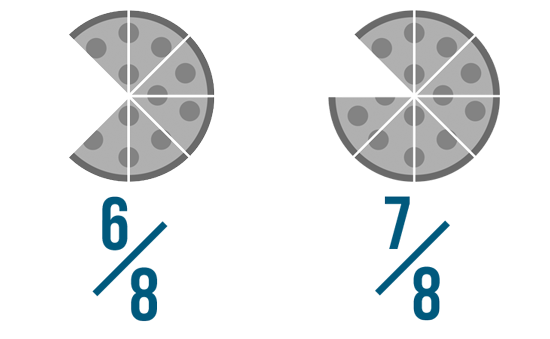
In this image, we tin encounter that 7/8 is larger. The illustration makes it easy to compare these fractions. Only how could we have done it without the pictures?
Click through the slideshow to learn how to compare fractions.
-
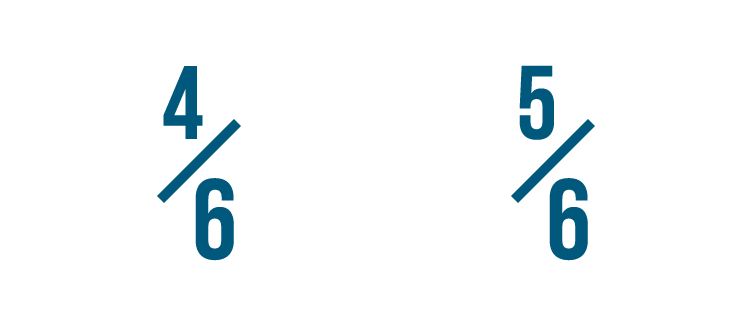
Earlier, we saw that fractions accept two parts.
-

One part is the superlative number, or numerator .
-
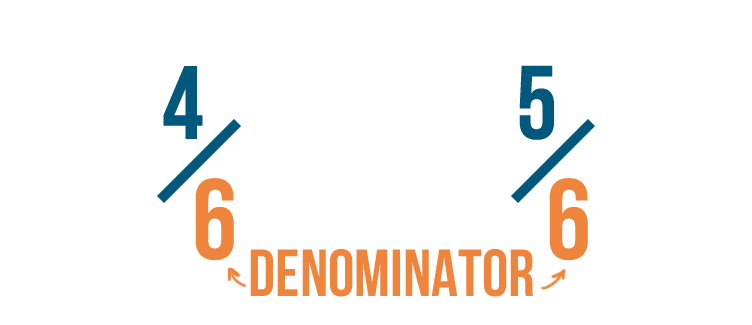
The other is the bottom number, or denominator .
-
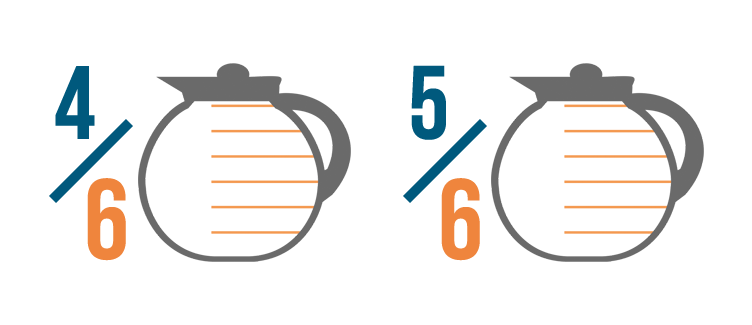
The denominator tells the states how many parts are in a whole.
-
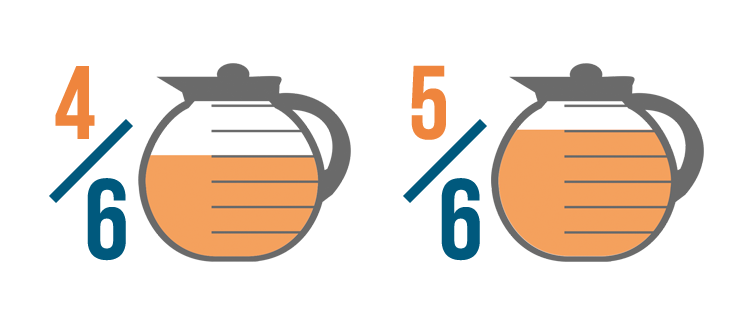
The numerator tells usa how many of those parts nosotros have.
-
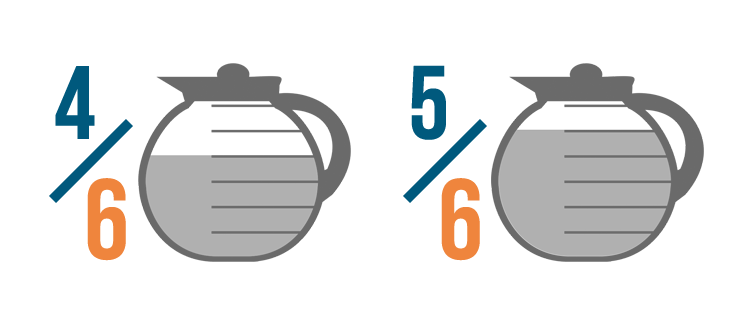
When fractions have the aforementioned denominator, information technology means they're split up into the same number of parts.
-
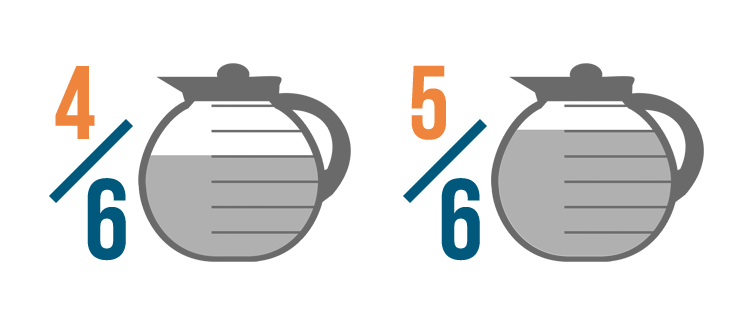
This means we tin can compare these fractions only past looking at the numerator.
-
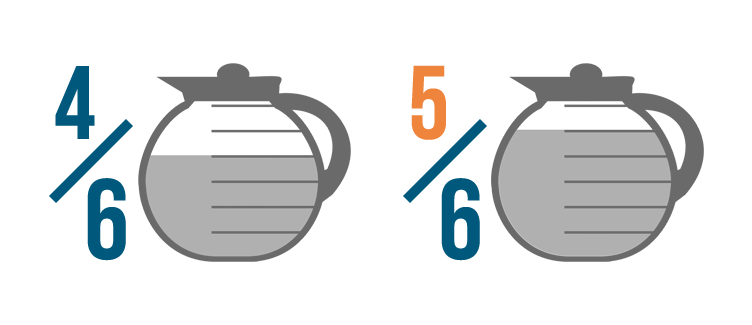
Here, five is more than 4...
-
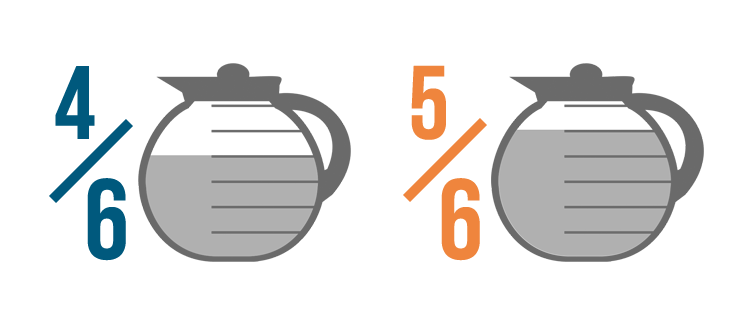
Here, 5 is more 4...so we can tell that five/6 is more than four/6.
-
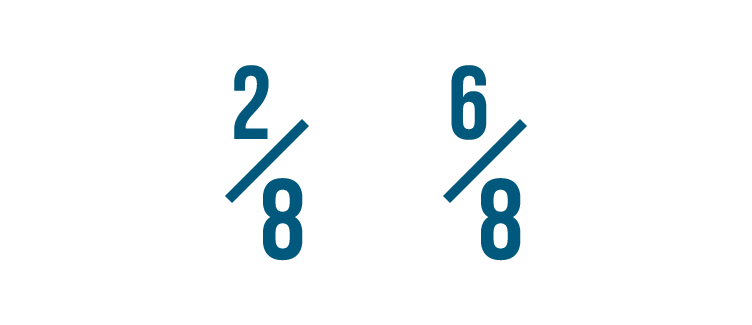
Let'south look at some other example. Which of these is larger: 2/viii or vi/viii?
-
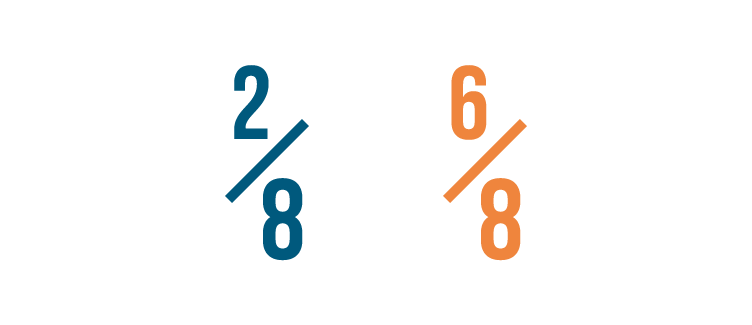
If you thought half dozen/viii was larger, you were right!
-

Both fractions accept the same denominator.
-
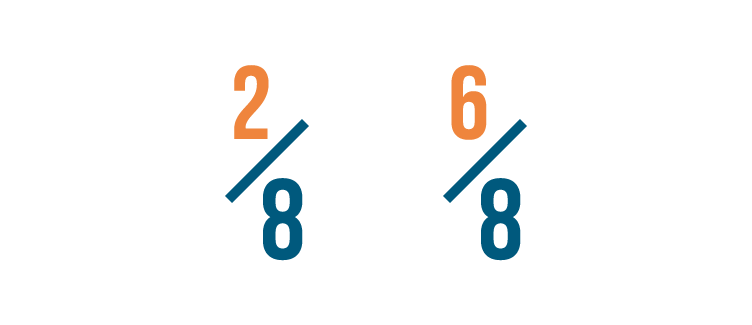
Then we compared the numerators. 6 is larger than 2, so 6/8 is more than two/8.
-
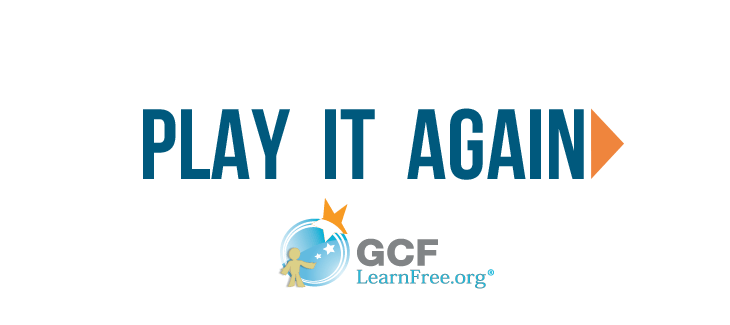
As you saw, if 2 or more than fractions have the same denominator, you can compare them by looking at their numerators. Equally you can run across beneath, 3/4 is larger than ane/4. The larger the numerator, the larger the fraction.

Comparison fractions with different denominators
On the previous folio, we compared fractions that take the aforementioned bottom numbers, or denominators . Merely y'all know that fractions tin accept any number every bit a denominator. What happens when you lot need to compare fractions with unlike bottom numbers?
For case, which of these is larger: 2/3 or 1/5? Information technology's difficult to tell only by looking at them. After all, 2 is larger than 1, but the denominators aren't the aforementioned.

If y'all look at the picture, though, the difference is clear: 2/3 is larger than 1/5. With an illustration, it was easy to compare these fractions, but how could we accept washed it without the picture?
Click through the slideshow to learn how to compare fractions with different denominators.
-
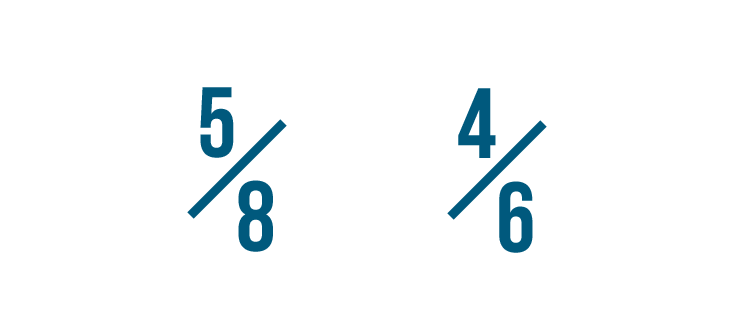
Let's compare these fractions: v/eight and 4/six.
-

Earlier we compare them, we need to change both fractions so they have the aforementioned denominator, or bottom number.
-

First, we'll find the smallest number that tin exist divided past both denominators. Nosotros call that the lowest common denominator.
-
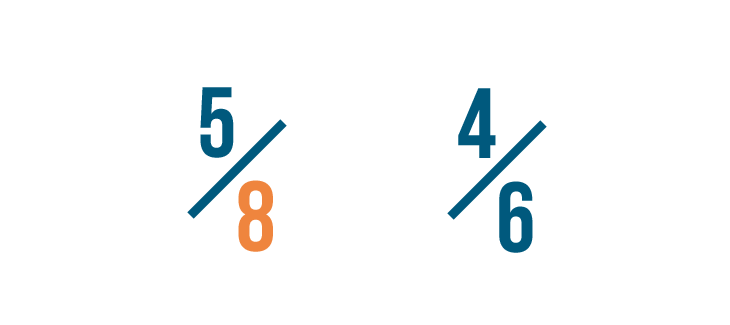
Our first step is to find numbers that can be divided evenly by viii.
-

Using a multiplication tabular array makes this like shooting fish in a barrel. All of the numbers on the 8 row can be divided evenly by 8.
-
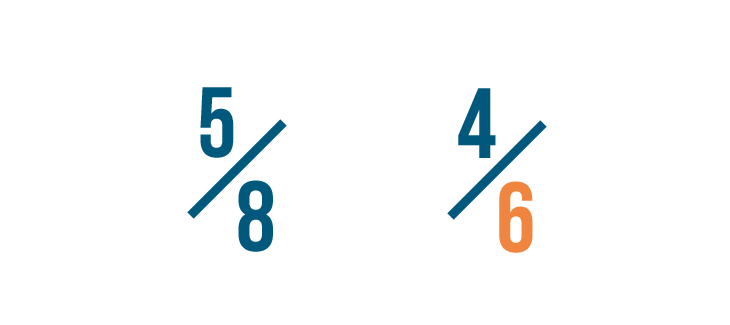
At present let'south look at our second denominator: six.
-
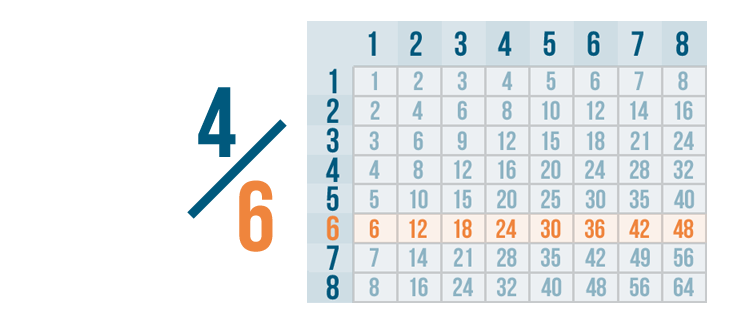
We can use the multiplication table once more. All of the numbers in the 6 row tin can be divided evenly by six.
-
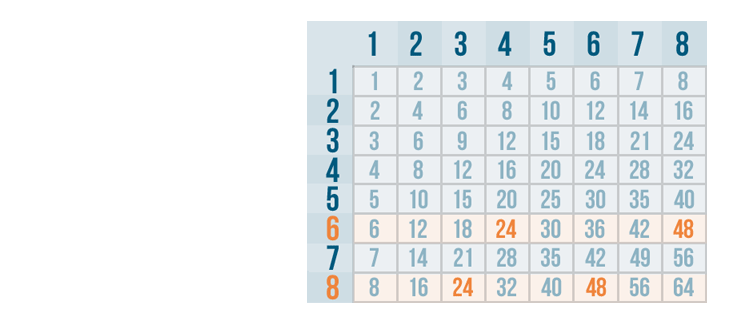
Let's compare the 2 rows. It looks like there are a few numbers that can be divided evenly by both 6 and 8.
-
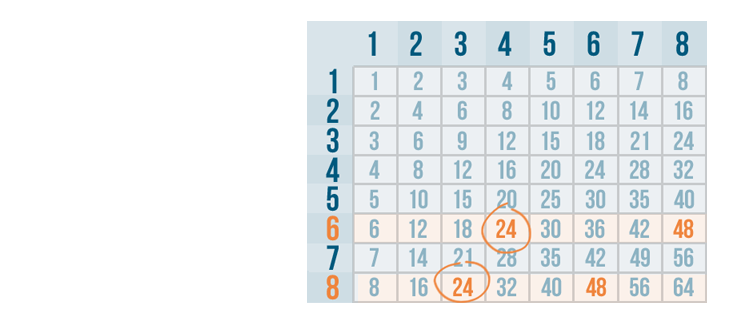
24 is the smallest number that appears on both rows, so information technology'south the lowest mutual denominator.
-
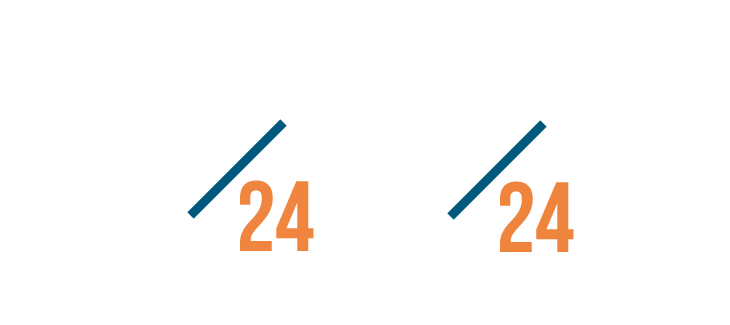
Now we're going to change our fractions and so they both have the same denominator: 24.
-

To practise that, nosotros'll have to alter the numerators the same manner nosotros changed the denominators.
-

Let'southward look at 5/eight again. In gild to change the denominator to 24...
-
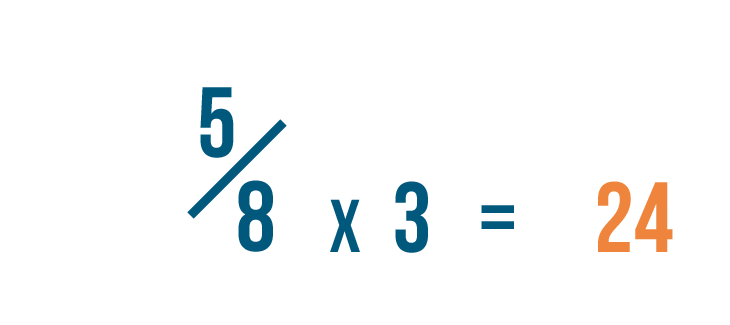
Permit'south look at 5/eight again. In social club to modify the denominator to 24...we had to multiply 8 by 3.
-
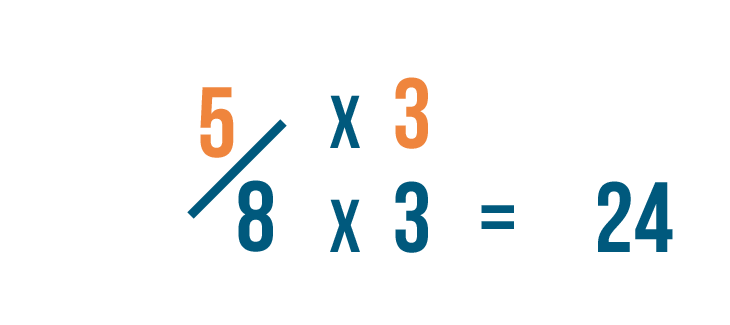
Since we multiplied the denominator by three, we'll also multiply the numerator, or pinnacle number, past iii.
-
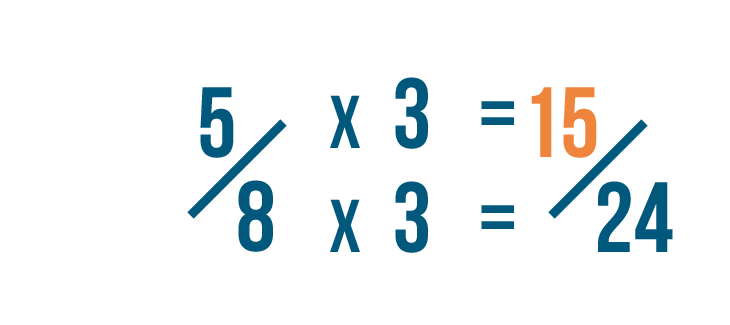
v times three equals 15. So nosotros've changed 5/8 into 15/24.
-
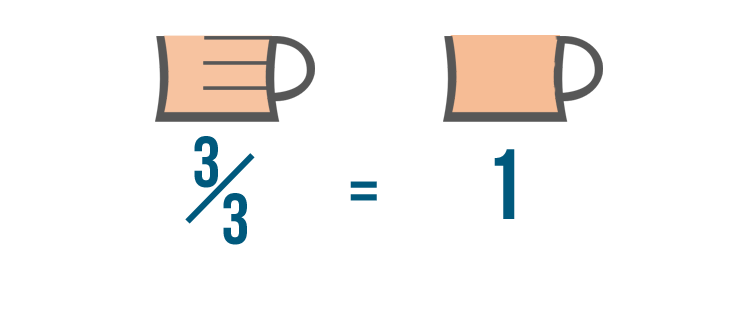
We can do that because any number over itself is equal to 1.
-
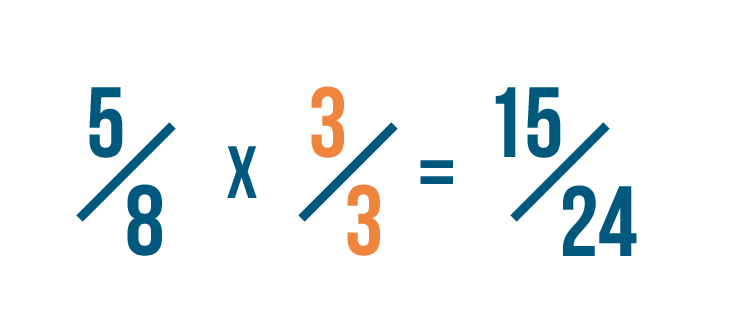
So when we multiply five/8 by iii/3...
-
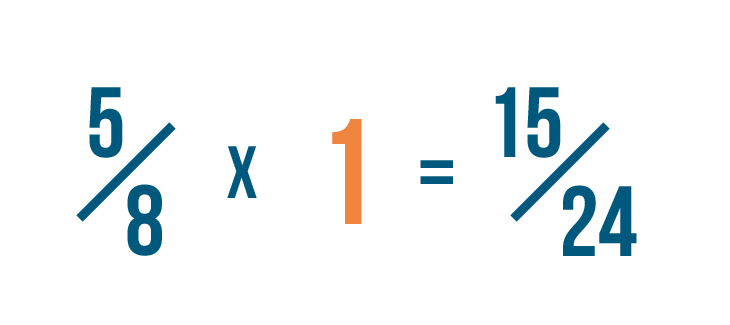
And so when we multiply 5/eight by three/3...we're actually multiplying v/8 by 1.
-
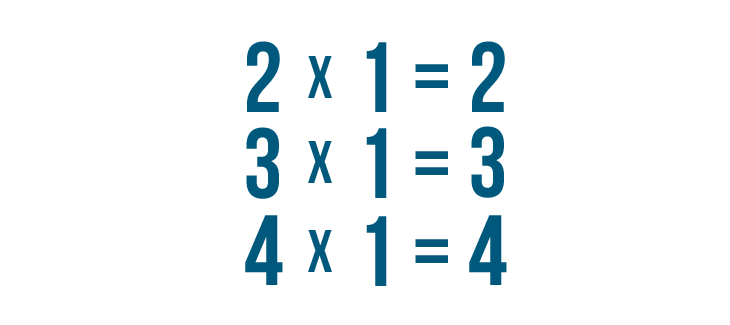
Since whatsoever number times 1 is equal to itself...
-
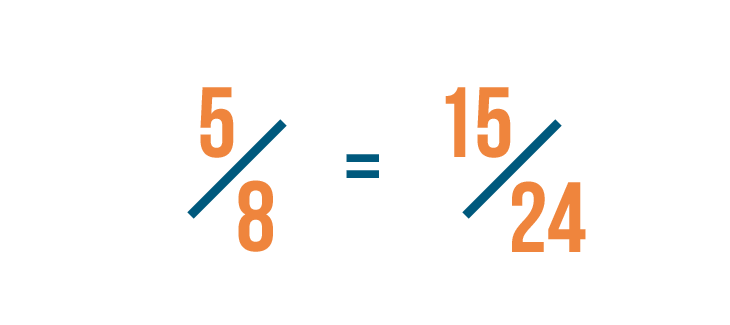
Since any number times 1 is equal to itself...we tin can say that 5/viii is equal to fifteen/24.
-

Now we'll exercise the same to our other fraction: iv/half dozen. Nosotros also inverse its denominator to 24.
-
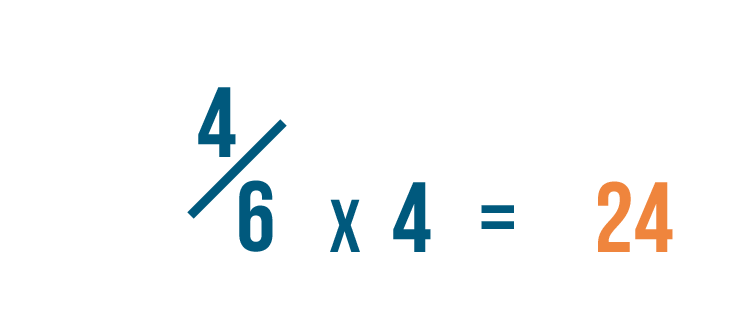
Our quondam denominator was 6. To get 24, nosotros multiplied half-dozen past 4.
-

Then we'll also multiply the numerator by 4.
-
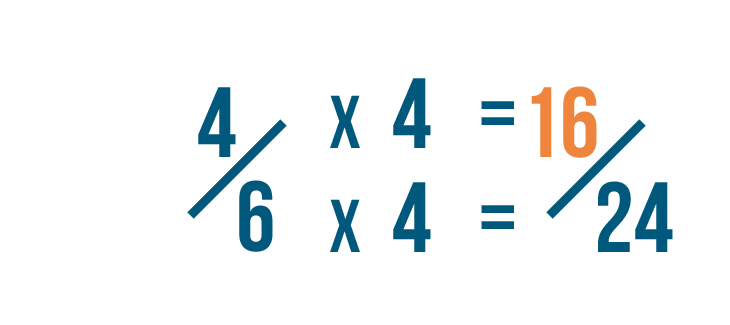
4 times 4 is 16. So iv/6 is equal to 16/24.
-
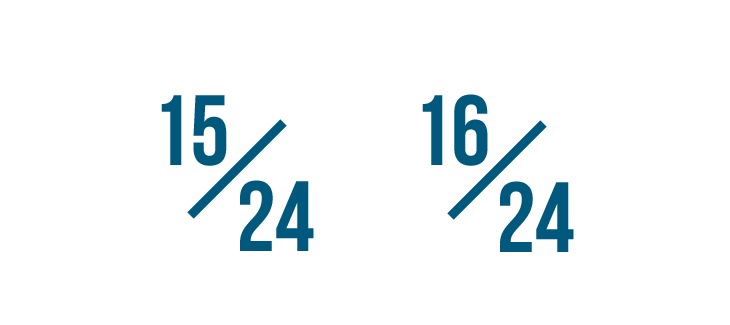
Now that the denominators are the same, we can compare the two fractions by looking at their numerators.
-
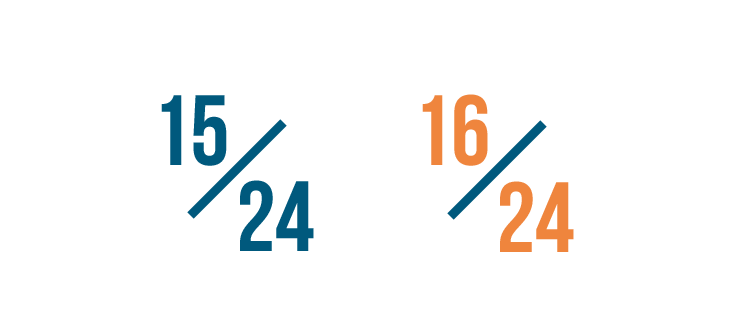
16/24 is larger than 15/24...
-
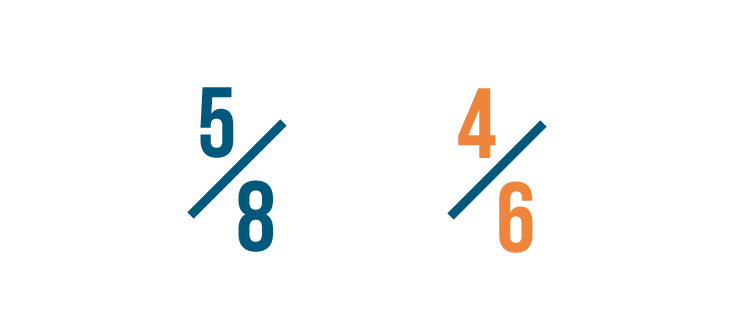
16/24 is larger than 15/24... so iv/half dozen is larger than 5/viii.
-

Reducing fractions
Which of these is larger: 4/8 or i/two?
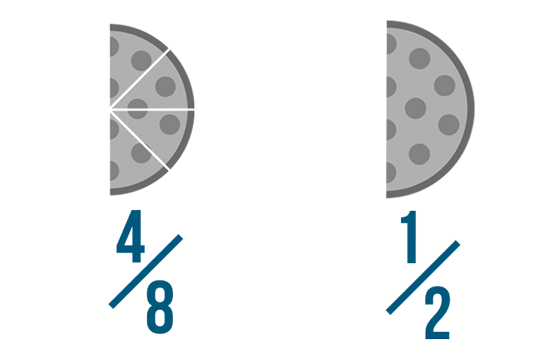
If you did the math or even just looked at the pic, you might accept been able to tell that they're equal . In other words, 4/8 and 1/2 hateful the same thing, even though they're written differently.
If 4/8 ways the same affair every bit ane/2, why not just call it that? One-half is easier to say than four-eighths, and for most people it's also easier to empathise. Afterwards all, when you eat out with a friend, you dissever the beak in half, not in eighths.
If you write 4/8 every bit 1/2, you're reducing it. When we reduce a fraction, we're writing it in a simpler grade. Reduced fractions are always equal to the original fraction.
Nosotros already reduced 4/8 to 1/2. If you look at the examples below, yous can meet that other numbers can exist reduced to ane/two as well. These fractions are all equal.
5/ten = 1/2xi/22 = 1/2
36/72 = 1/2
These fractions take all been reduced to a simpler grade as well.
4/12 = i/threefourteen/21 = 2/three
35/50 = 7/x
Click through the slideshow to learn how to reduce fractions past dividing.
-
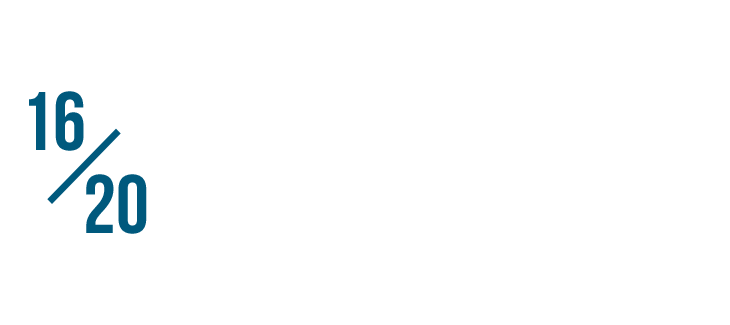
Let'south try reducing this fraction: 16/20.
-
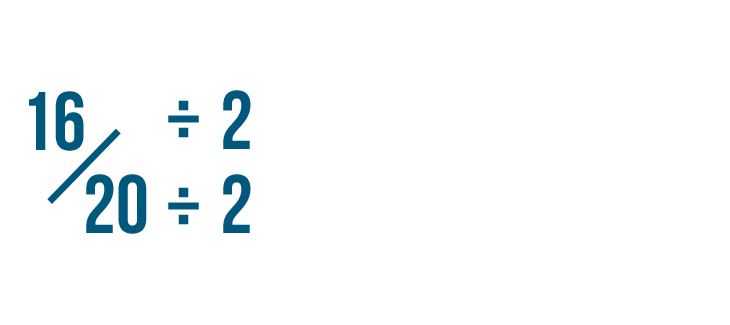
Since the numerator and denominator are even numbers, you lot can divide them past 2 to reduce the fraction.
-

First, we'll split up the numerator by 2. 16 divided by 2 is 8.
-
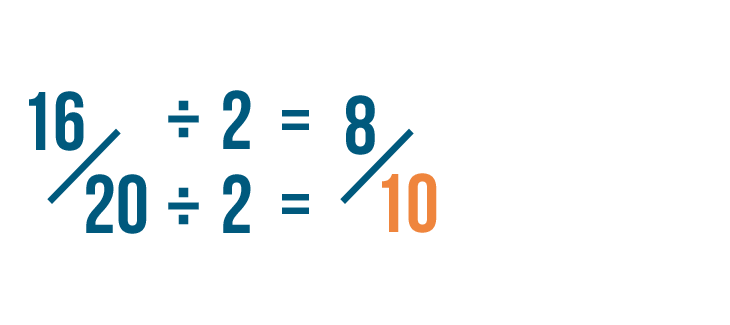
Adjacent, nosotros'll divide the denominator by 2. 20 divided by 2 is 10.
-
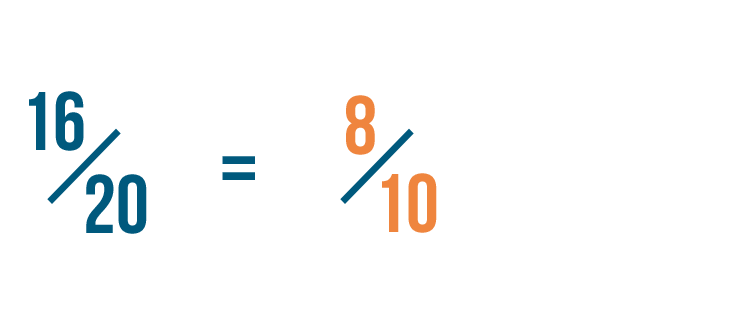
We've reduced sixteen/20 to 8/10. We could besides say that 16/20 is equal to 8/10.
-

If the numerator and denominator tin can still be divided by 2, we can go on reducing the fraction.
-
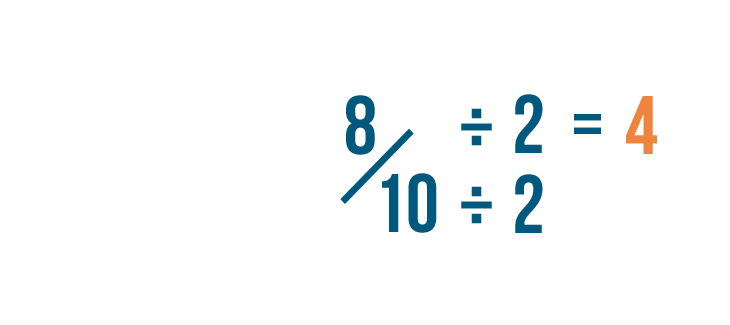
eight divided past 2 is iv.
-
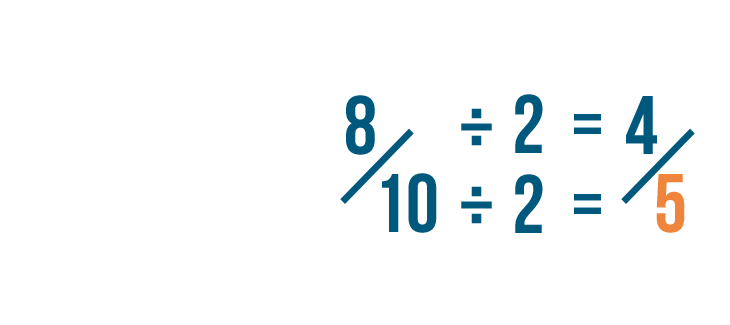
x divided by two is five.
-
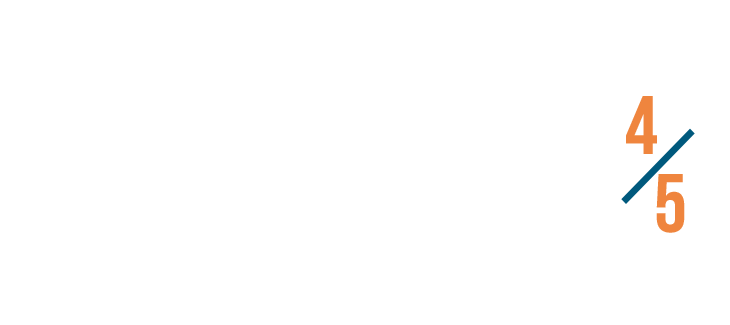
Since there's no number that four and 5 can be divided by, we tin can't reduce iv/5 any further.
-
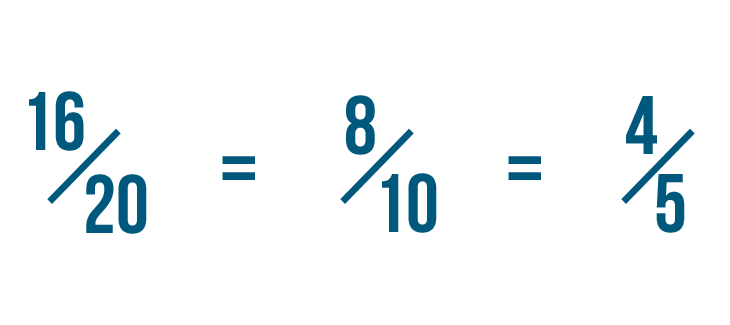
This ways 4/five is the simplest form of 16/xx.
-
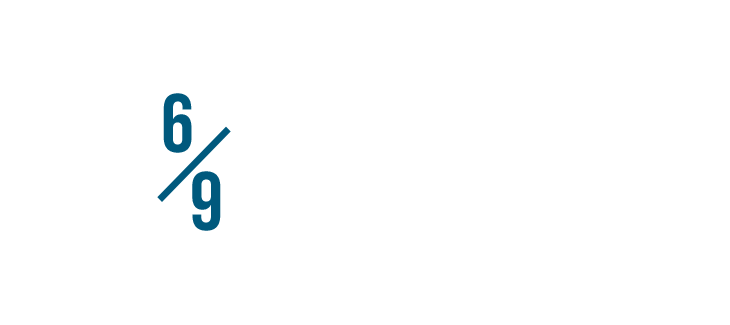
Let's try reducing some other fraction: half-dozen/ix.
-

While the numerator is even, the denominator is an odd number, so we tin't reduce by dividing by two.
-
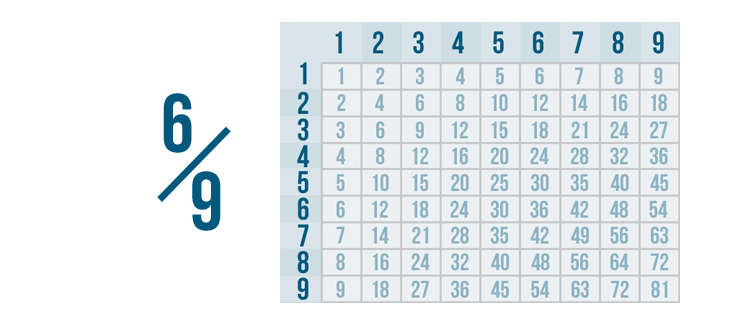
Instead, we'll need to find a number that 6 and 9 tin exist divided by. A multiplication tabular array will brand that number easy to notice.
-
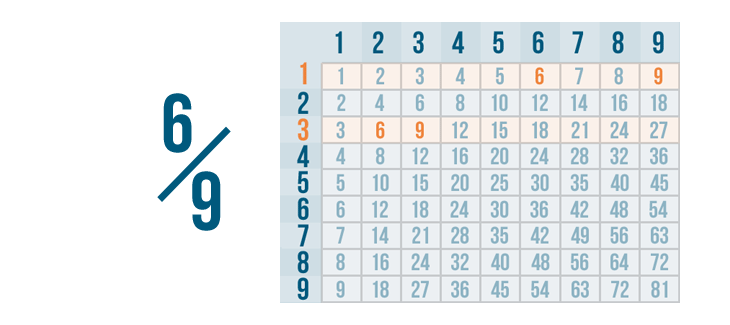
Allow'south find 6 and 9 on the same row. Every bit yous can see, half dozen and nine can both be divided past ane and 3.
-

Dividing past ane won't alter these fractions, so we'll use the largest number that 6 and 9 tin be divided by.
-
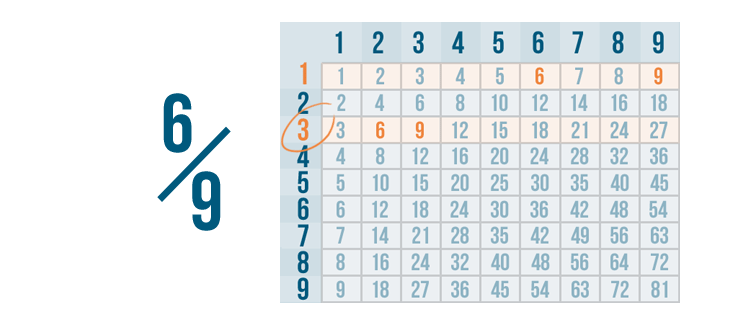
That's 3. This is called the greatest mutual divisor, or GCD. (You lot can besides call it the greatest common factor, or GCF.)
-

three is the GCD of 6 and 9 because it's the largest number they tin be divided by.
-
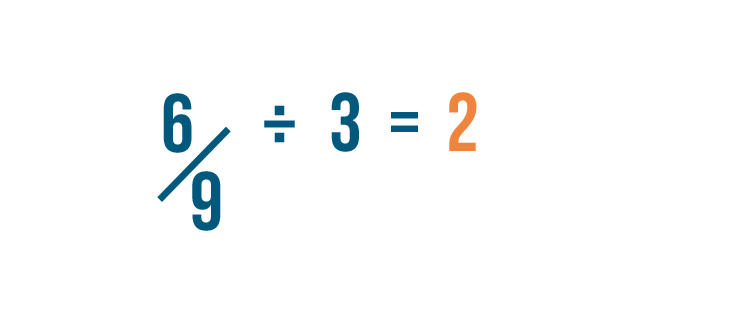
So we'll dissever the numerator by 3. 6 divided by three is 2.
-
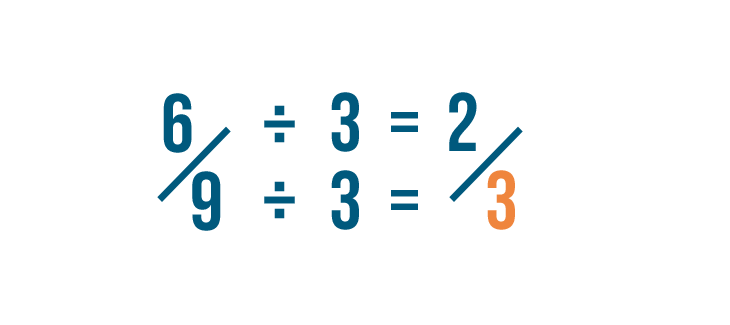
Then nosotros'll divide the denominator by 3. ix divided past iii is 3.
-
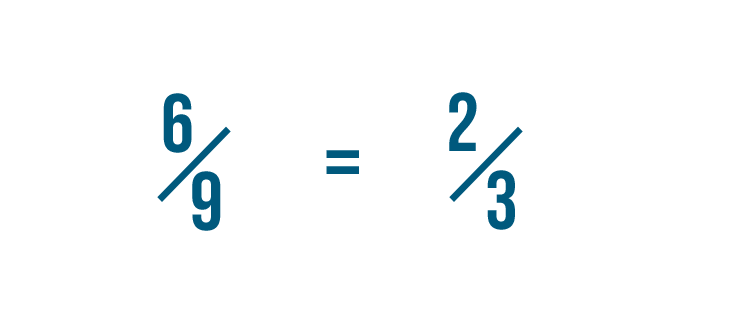
Now we've reduced half-dozen/ix to two/3, which is its simplest grade. Nosotros could also say that 6/9 is equal to 2/3.
-

Irreducible fractions
Not all fractions tin exist reduced. Some are already as elementary as they can be. For example, you tin can't reduce 1/two because there's no number other than ane that both 1 and 2 can exist divided by. (For that reason, you can't reduce whatsoever fraction that has a numerator of i.)
Some fractions that take larger numbers can't exist reduced either. For instance, 17/36 can't be reduced because there's no number that both 17 and 36 can be divided by. If yous tin't find any common multiples for the numbers in a fraction, chances are it's irreducible .
Endeavor This!
Reduce each fraction to its simplest grade.
Mixed numbers and improper fractions
In the previous lesson, you learned virtually mixed numbers. A mixed number has both a fraction and a whole number. An example is 1 2/3. You'd read 1 2/iii like this: one and two-thirds.
Some other style to write this would be 5/three, or five-thirds. These two numbers expect unlike, just they're actually the aforementioned. 5/3 is an improper fraction. This just ways the numerator is larger than the denominator.
There are times when you may prefer to use an improper fraction instead of a mixed number. It's easy to change a mixed number into an improper fraction. Let's learn how:
-
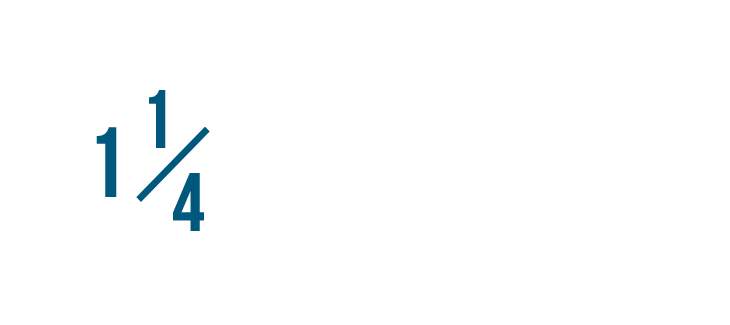
Allow'due south catechumen 1 ane/4 into an improper fraction.
-
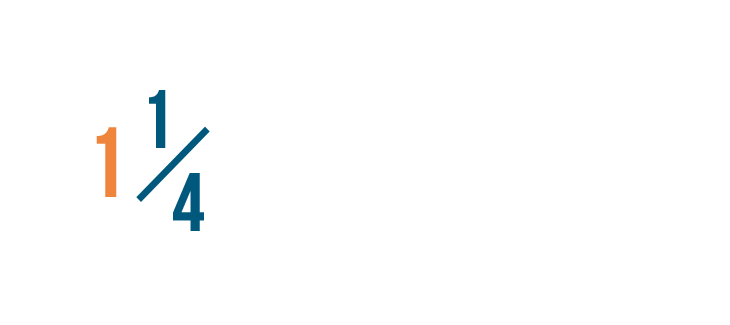
First, nosotros'll need to find out how many parts make upwardly the whole number: 1 in this example.
-
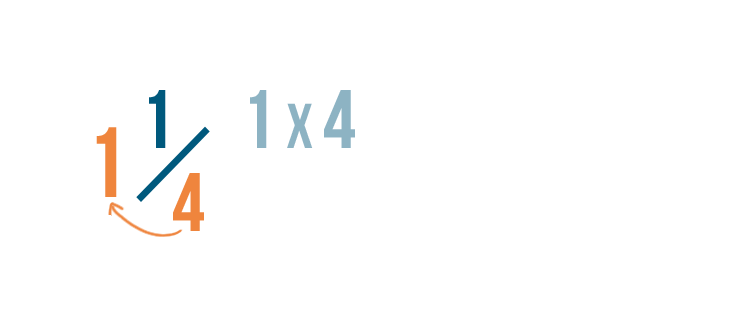
To do this, we'll multiply the whole number, i, by the denominator, iv.
-

i times 4 equals 4.
-

At present, let's add together that number, 4, to the numerator, i.
-
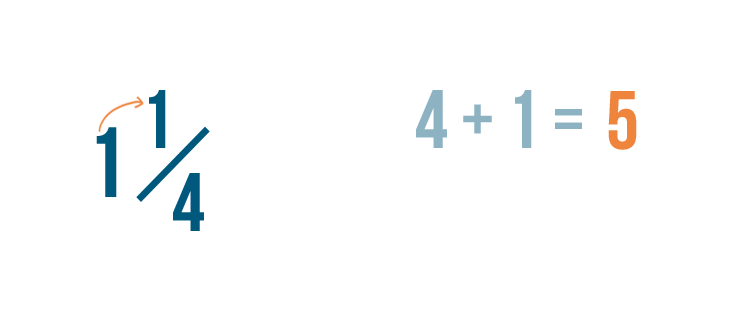
4 plus i equals 5.
-

The denominator stays the aforementioned.
-
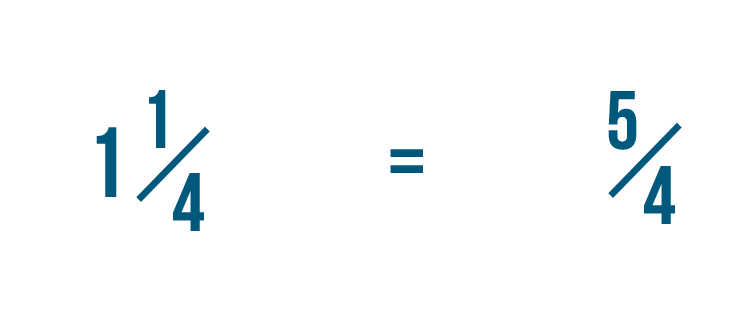
Our improper fraction is 5/4, or v-fourths. So we could say that 1 1/4 is equal to 5/4.
-
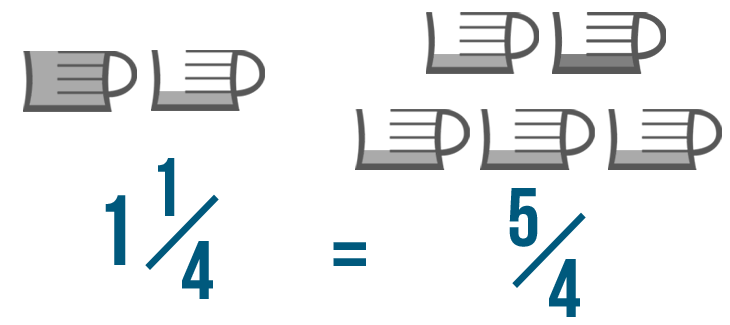
This means at that place are v 1/4s in ane ane/4.
-

Let'southward convert another mixed number: 2 ii/5.
-

First, nosotros'll multiply the whole number past the denominator. 2 times five equals x.
-
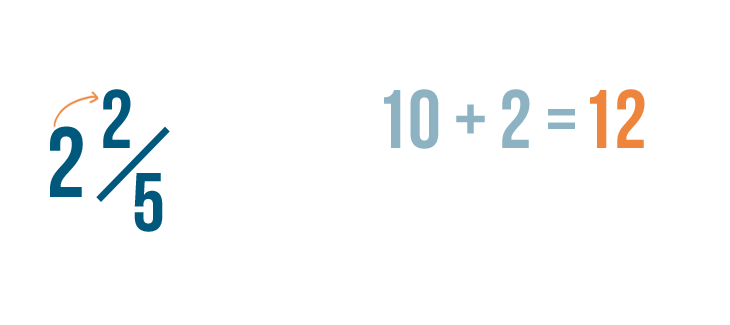
Next, we'll add 10 to the numerator. 10 plus 2 equals 12.
-
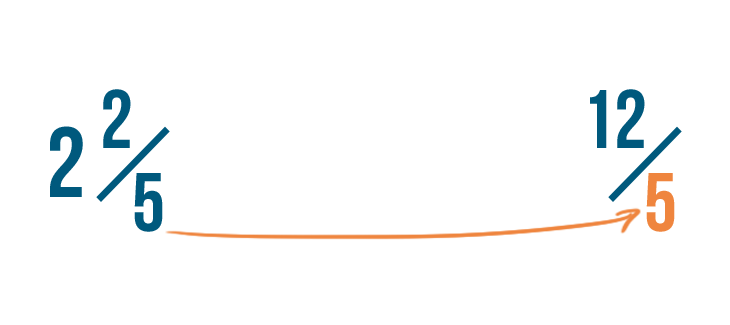
As always, the denominator will stay the same.
-

And then 2 two/5 is equal to 12/5.
-

Effort This!
Try converting these mixed numbers into improper fractions.
Converting improper fractions into mixed numbers
Improper fractions are useful for math bug that use fractions, as yous'll larn later. However, they're too more than difficult to read and understand than mixed numbers. For case, information technology's a lot easier to picture two iv/seven in your head than 18/seven.
Click through the slideshow to acquire how to modify an improper fraction into a mixed number.
-
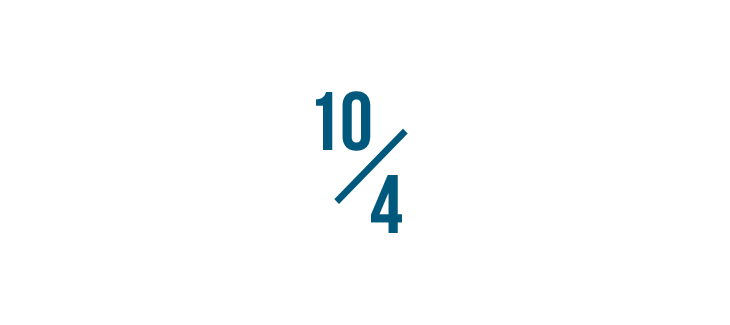
Let's turn 10/four into a mixed number.
-
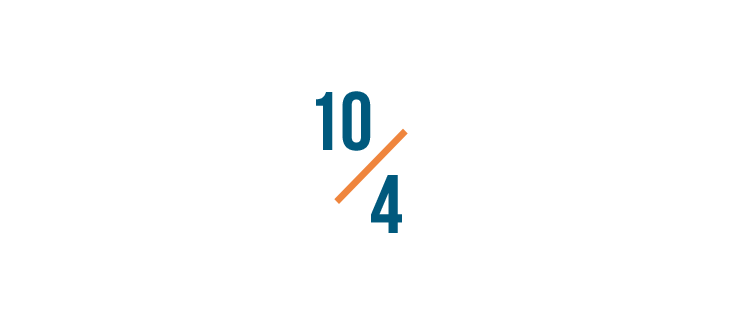
You tin remember of any fraction equally a division problem. Just treat the line between the numbers like a partition sign (/).
-
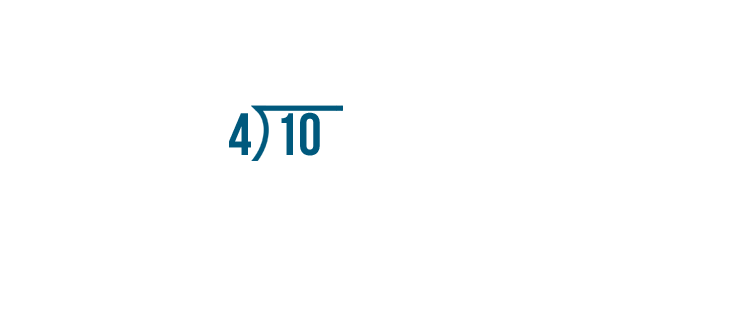
So nosotros'll carve up the numerator, 10, past the denominator, 4.
-
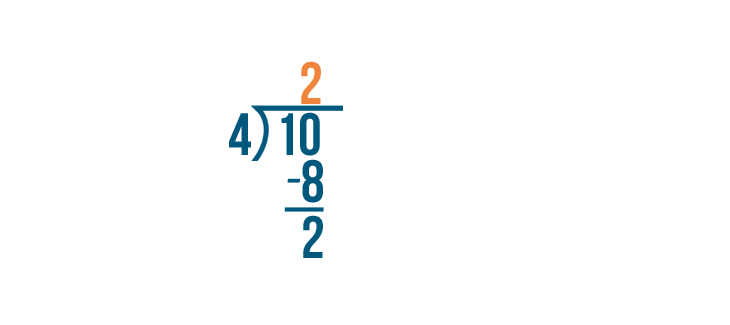
x divided by 4 equals two...
-

ten divided past four equals 2... with a balance of two.
-

The reply, 2, will become our whole number considering 10 tin can be divided past iv twice.
-
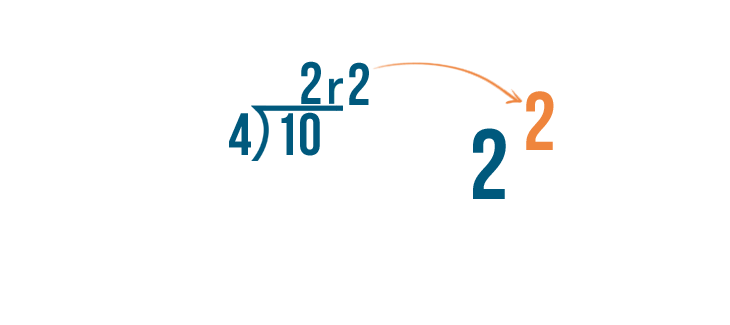
And the balance, 2, will go the numerator of the fraction considering we have ii parts left over.
-
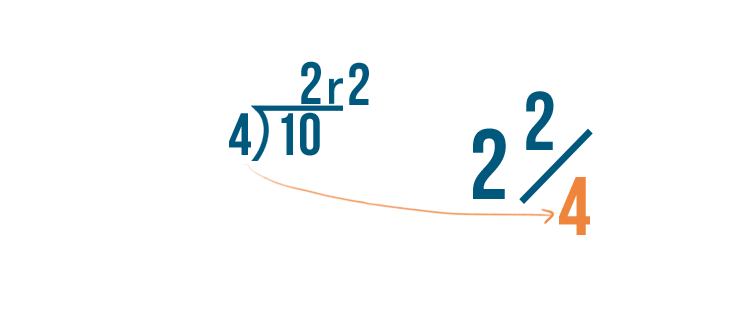
The denominator remains the aforementioned.
-
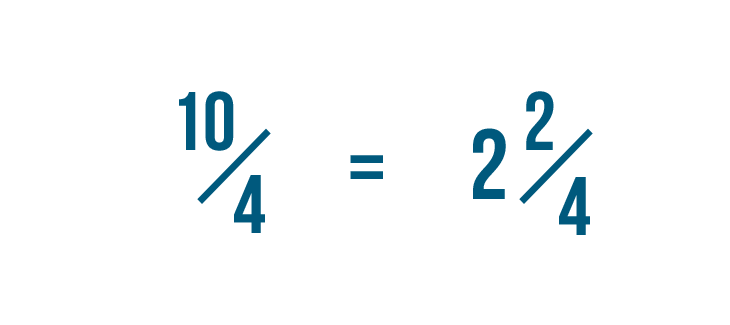
Then 10/four equals ii 2/4.
-
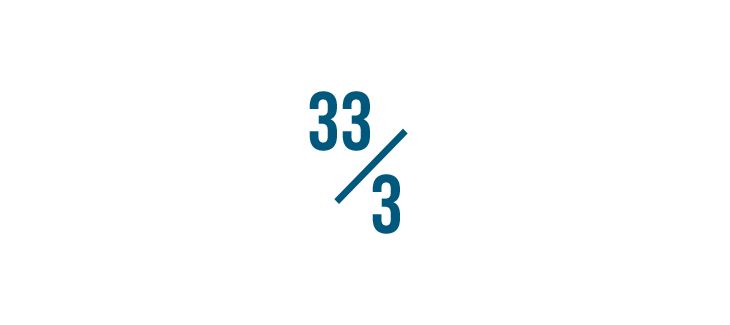
Let's try another example: 33/three.
-
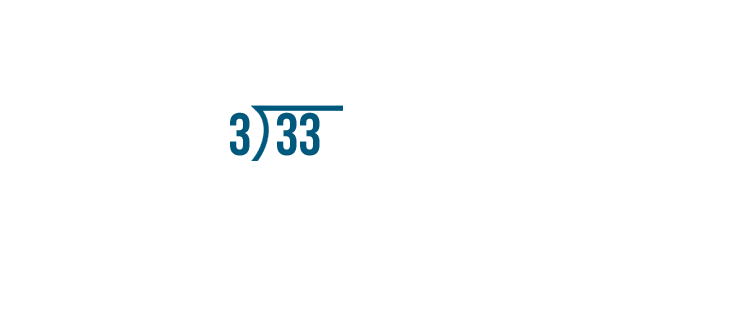
We'll carve up the numerator, 33, by the denominator, three.
-
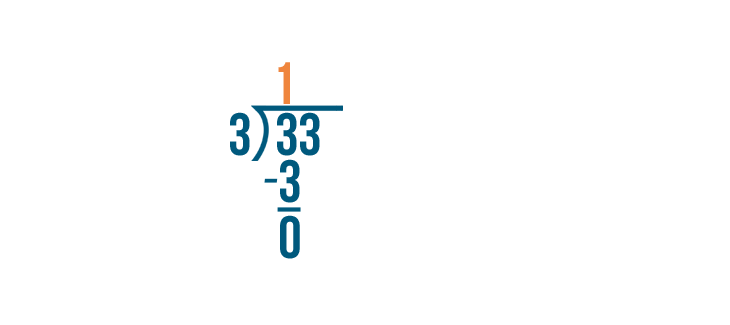
33 divided by 3...
-
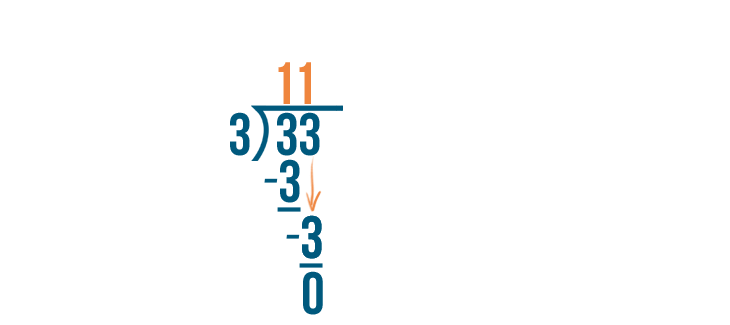
33 divided by 3... equals 11, with no residuum.
-

The respond, 11, will go our whole number.
-
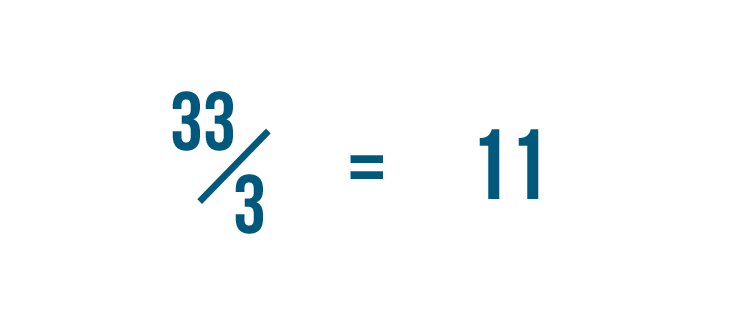
There is no rest, so we can see that our improper fraction was really a whole number. 33/three equals xi.
-

Try This!
Attempt converting these improper fractions into mixed numbers.
/en/fractions/adding-and-subtracting-fractions/content/




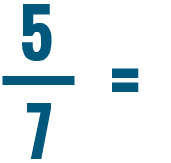
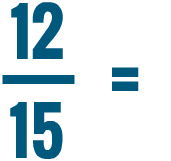
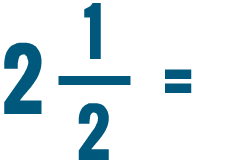




























































































0 Response to "Is 5/16 Thicker Than 1/4"
Post a Comment